Rowen van Eeden comes from Cape Town, South Africa. He has completed his entire tertiary education at the University of Cape Town. His Masters research was on diving behaviours in the Endangered African Penguin and was awarded a distinction as well as the prestigious Purcell Memorial Award for best Zoology thesis. Rowen was selected as the ideal PhD candidate to undertake this important research which seeks to understand the drivers for the decline of the Martial Eagle in South Africa, and Kruger National Park in particular. Rowen completed his PhD at the end of 2016 and has already published one paper from his thesis, with several more in the pipeline. Rowen’s research was funded by the South African DST-NRF centre of Excellence at the FitzPatrick Institute of African Ornithology, and he generated considerable other sources of funding, including from National Geographic, Natural Research Ltd (UK), Columbus Zoo, Riverbank Zoo, African Bird Club, Endangered Wildlife Trust – Birds of Prey Programme and the Raptor Research Foundation. We continue to monitor the Kruger population with funding from ABAX investments.
Arjun Amar, Cape Town, South Africa
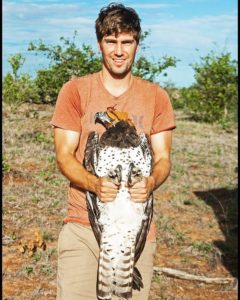
Why have you chosen the Martial Eagle for your PhD thesis?
Martial Eagles are a species that have been poorly studied over the last 20 or so years. The launch of the second South African Bird Atlas Project provided a good opportunity for researchers at the University of Cape Town to start comparing reporting rates of the species. It was first indicated in a short report http://www.adu.org.za/news.php?id=2384 that the species has undergone declines in even some of South Africa’s largest protected areas. There was a clear need to understand this decline and my supervisor Dr. Arjun Amar saw this as a priority research topic and came up with the project. The project was conducted in partnership with SANParks and Andre Botha from EWT.
What is the scope of your research?
Our research aims to understand the habitat preference, ranging behaviour, dispersal ecology, distribution and breeding performance of Martial Eagles in Kruger National Park.
How many pairs are currently breeding in Kruger National Park and the areas surrounding it?
We estimated that the park could support between 60 and 70 breeding pairs.
What is the main threat to the Martial Eagle in Kruger National Park?
Some of the main threats to the species in Kruger are electrocutions and habitat change. However, we are most concerned with mortalities in the landscape surrounding protected areas such as electrocutions and persecution.
Can African Elephants be a problem – e.g. by destroying trees with nests on it?
Elephants could pose a threat by reducing the availability of nesting trees and changing the underlying structure of African Savannas, but we know that Martial Eagles can persist in largely treeless environments as long as there are other structures, e.g. power pylons, that can provide nesting platforms.

What is the main food of Martial Eagles in Kruger National Park?
My study didn’t investigate diet to such an extent but monitor lizzards and game birds tend to dominate their diet. Small antelope such as steenbok feature less.
What is the preferred nesting tree?
The species makes use of ca. 15m tall Acacia nigrescens (knob thorn) and Combretum imberbe (lead wood) trees but other tall trees are used, too.
Do Martial Eagles compete with other species, e.g. other large eagles like African Black Eagles or Crowned Eagles for food or nesting places? Or maybe with large vulture for trees suitable for nesting?
Within Kruger National Park, Martial Eagles are the dominant large eagle and although Black Eagles and Crowned Eagles do occur in the landscape, Black Eagles are typically cliff nesters and Crowned Eagles are typically a forest species in the region. These other large eagles also have much smaller ranges so I wouldn’t say there is much competition where they co-occur. Some vulture species such as White-backed Vultures have usurped some Martial Eagle nests.
Can Leopards be a threat to chicks in the nest?
I’m sure leopards could be a threat but we have had very good nestling survival even in Kruger where predators are abundant.
What was the heaviest bird you caught? What wingspan did it have?
The largest of the 40 birds we caught for the study was 5.2 kg. There are records of larger eagles but this may be region specific or stem from captive birds. 5.2 kg is still a very large eagle! She had a wing chord length of 667 mm.
How dangerous is field work in Kruger National Park? Any threats by lions, rhinos, elephants – or maybe poachers?
Field work is reasonably dangerous and you should be aware of the risks when working in dangerous game areas. I’ve had my fair share of run ins with elephants, lion, rhino, buffalo and leopard on foot. Being charged by an elephant and a buffalo are two stand out encounters I wouldn’t wish to repeat. There are some basic things to do in an encounter like standing your ground and making a lot of noise. Never run! Poachers seem like an obvious threat but I would hazard a guess that your chances of being a victim of violent crime in a large city are far greater.
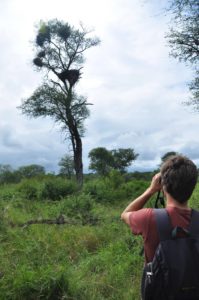
What is known about the status of the Martial Eagle across Africa?
Across Africa the conservation status isn’t as well established as it is in South Africa but some good work is being done in Kenya and interest in the species continues to grow. It is however accepted that the species is declining across its range and the IUCN recognises the species as Vulnerable
What gaps do still exist in our knowledge of Martial Eagles and on what should future research focus on?
We still lack knowledge on their juvenile dispersal behaviour and breeding performance. These are ongoing research topics in Kruger National Park.
What needs to be done to secure the future of Martial Eagles in Kruger in particular?
That’s a very difficult question. I think improving the species breeding performance, mitigating threats such as electrocutions and power line collisions, ensuring appropriate habitat in and around Kruger, and lastly educating farmers and rural people that may perceive the species to be a threat to their small livestock will be a very important step in the right direction.
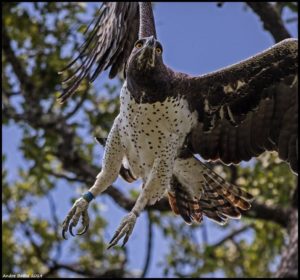
What other projects and conservation initiatives are going on in South Africa and across the continent?
There is currently work being conducted on Martial Eagles by Munir Virani and his team in Kenya. They have some GPS tags out on birds and we look forward to seeing how their birds behaviours compare to ours.
How do you see the future of the Martial Eagle in Africa?
I think the birds will persist. The overall threat to biodiversity in a developing region like Africa is however very concerning and my only hope is that we can find ways to improve peoples standard of living while maintaining large tracts of wilderness for conservation purposes.
How can bird watchers and other scientists help?
Bird watchers should continue to photograph and express their interest for these amazing birds on social media platforms. Everyone goes on about the big mammals and they tend to get most of the conservation attention as a result. If you love birds, express it!
Scientists can help by starting studies in other areas and exploring avenues of research we maybe haven’t thought of. Martial Eagle research is expensive and takes long term commitment because of their long life cycle. The more researchers diving into research on the species, similar to what goes on with Golden Eagles, the better and this would be incredible for the species conservation.
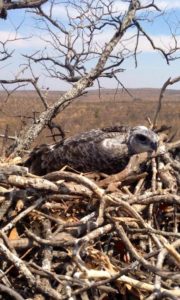
What was your favourite moment with Martial Eagles?
My favourite moments were as an observer/tourist rather than a researcher. I value watching Martial Eagles in the wild without having to handle them. A Martial Eagle trying to snatch a young baboon in a river bed on a game drive with my parents definitely stands out to me. Another stand out memory is of an aerial battle between a Bateleur and a Martial Eagle.
Rowen, many thanks for the interview!

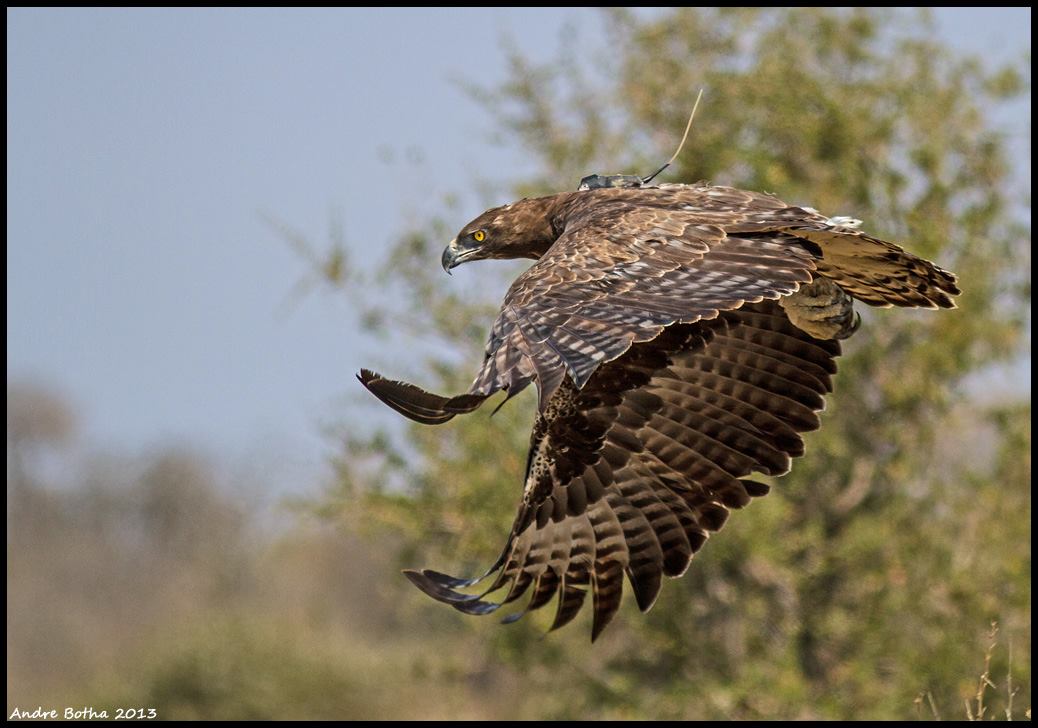
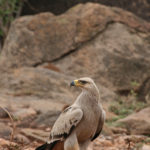
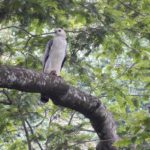

Rowen, Is there any chance of getting a copy of your findings. Thanks.
Ian Bales-Smith
Very interesting. We are safari operators specializing in game drives in Kruger Park.
Can we help by submitting sightings?
One way to submit sigthings is via the African Raptor Database:
https://www.africanraptors.org/the-african-raptor-databank-your-help-is-needed/
It sounds like your project has added a lot of knowledge about the species. One question I have is how Martials survive in unprotected areas where they are rarely seen, at least in Kenya. Are these all sink populations?
The Martial Eagle Project in Kenya is being led by Stratton Hatfield.
Cheers, Darcy